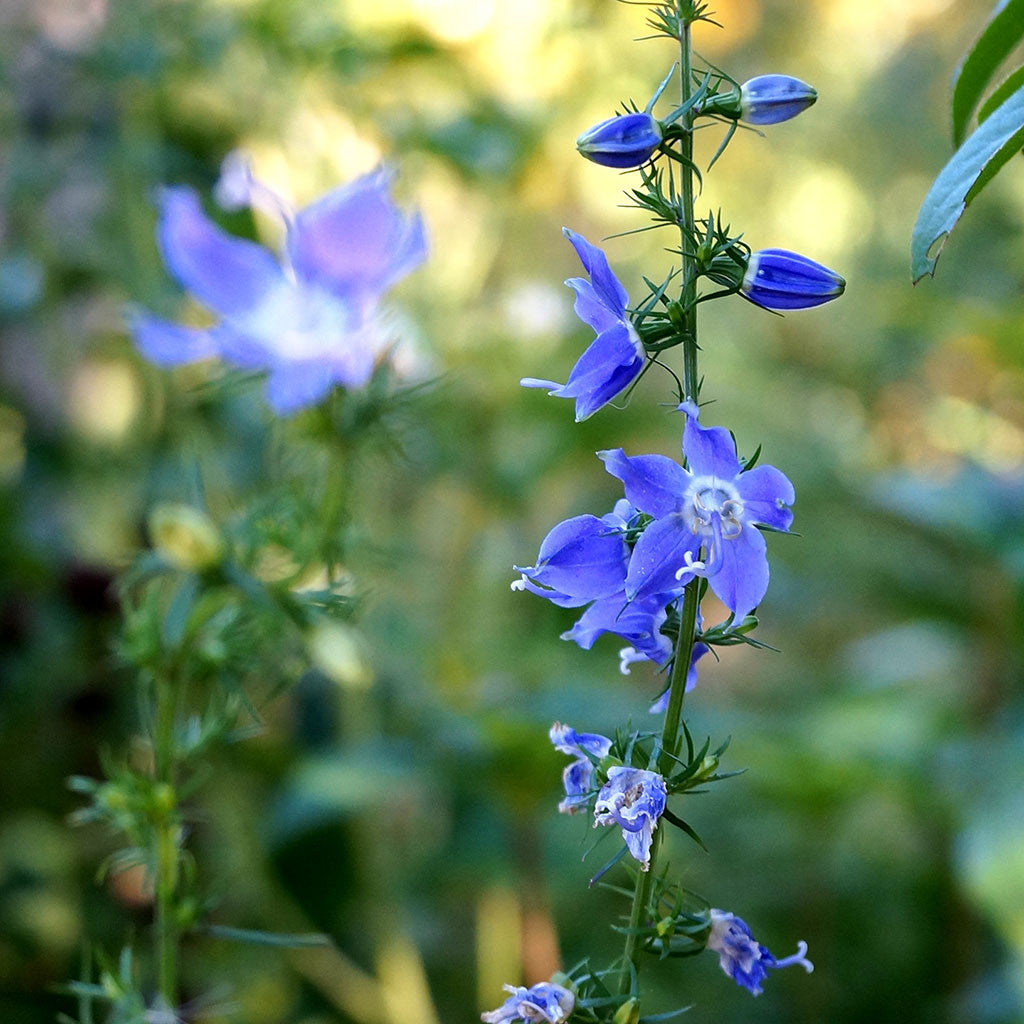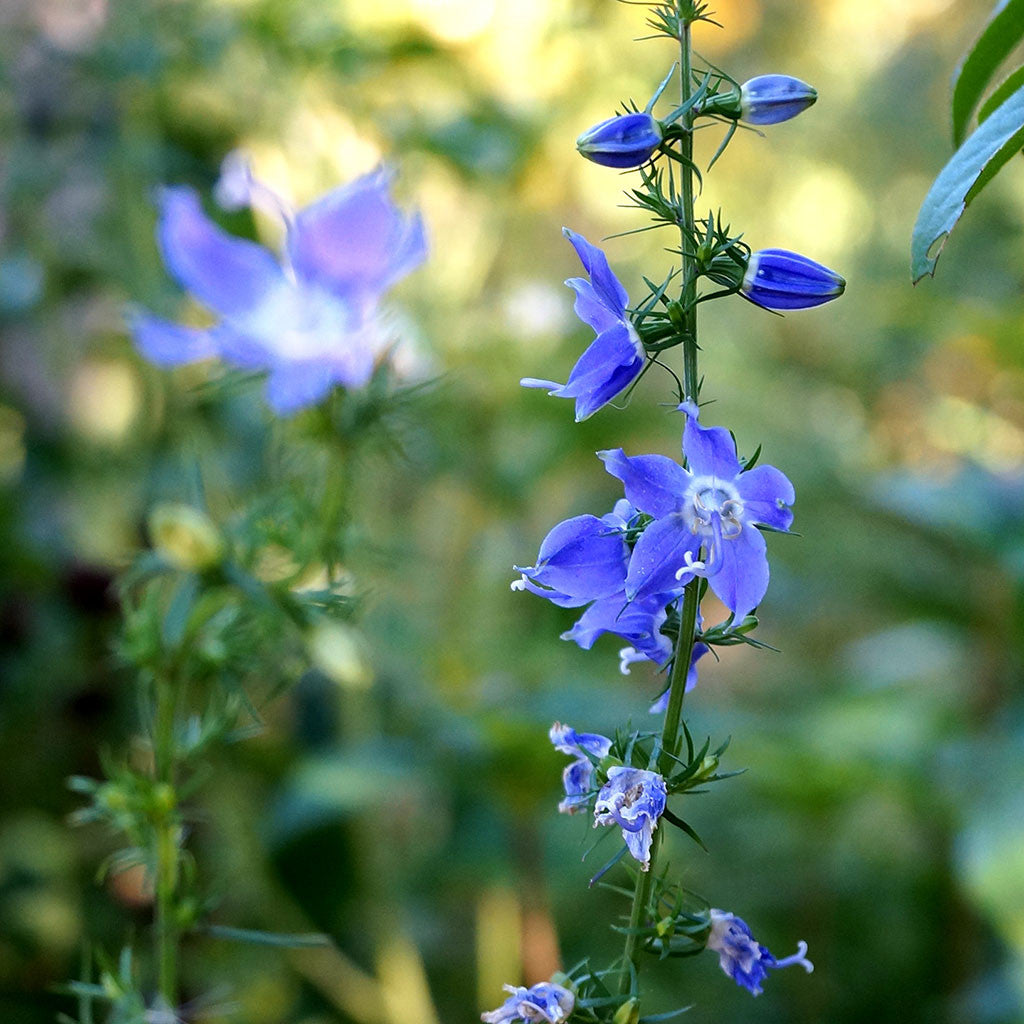Bellflowers — Tall American bellflower (Campanula americana) Seeds
Bellflowers — Tall American bellflower (Campanula americana) Seeds
In stock
Couldn't load pickup availability
A mid-summer-blooming biennial wildflower with tall spikes of delicate bell-shaped flowers attractive to hummingbirds and butterflies. Dramatic in a garden; self-sows.
Each seed package carries a specific germination code along with the plant description. These codes indicate specific sowing instructions.
- A Seeds can be sown outdoors in early spring.
- B Seeds need a winter or cold period to germinate. Sow outdoors in fall or winter.
- C Seeds need light to germinate; sow on soil surface and leave uncovered.
- D Seeds need alternating cycles of warm-to-cold-to-warm to germinate. They can be sown either outdoors in spring or summer and will germinate the following year or in a flat in a warm place for 3 months, then moved to a refrigerator for 2 months, then moved outside in the early summer warmth.
- E Seeds can not be allowed to dry out. Sow immediately.
- F Seeds take two years to germinate. Sow outside in the fall or winter and look for germination in the second spring. A shady location prevents the flats from rapid drying and reduces weeding
- G Large seeds should be soaked overnight in water.
If you have specific questions about seeds and germination guidelines please contact us at info@wildseedproject.net.
Native to Maine: No. Native south and west of New England.
Growing conditions: Sun to part shade in medium soil
Grows up to: 2-5'
Blooms: In mid-summer
Pairs well with: Swamp milkweed, three-lobed coneflower, cranesbill geranium, Eastern shooting star, Jacob's ladder, red columbine, and wild leek
Natural habitat: Woodlands and edges with moist soils
Seeds per packet: 50-100
Germination Code(s): B and C
These seeds need a winter or cold period to germinate - a minimum of 30 days below 40°F in moist soil (or sand or vermiculite). Sow outdoors in pots, on the soil surface and leave uncovered, November through March. A great species for beginner seed-sowers.

